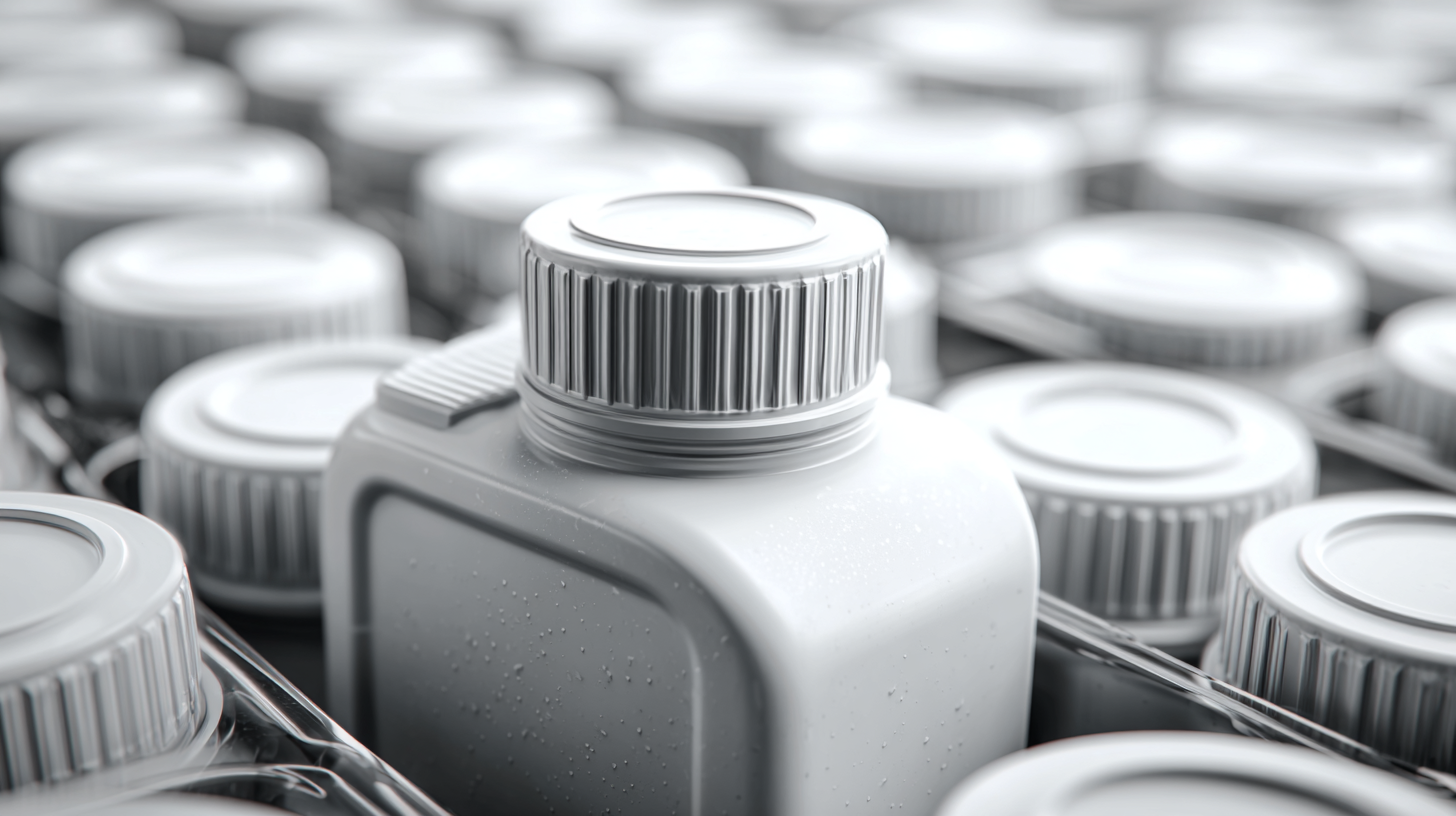The Ultimate Guide to Understanding and Using Best In Mold Labels for Your Products
In the ever-evolving landscape of product labeling, In Mold Labels (IML) have emerged as a game-changer for manufacturers looking to enhance branding and durability. According to a recent industry report by Smithers Pira, the global IML market is expected to reach $3.4 billion by 2025, driven by the rising demand for sustainable packaging solutions. In Mold Labels offer numerous advantages, including superior resistance to scratches, chemicals, and fading, which make them ideal for a variety of applications ranging from food containers to consumer electronics. As brands strive to create a memorable impact while ensuring product longevity, understanding and implementing best practices for In Mold Labels becomes essential. This ultimate guide aims to equip you with the insights and strategies necessary to effectively leverage IML for your products, ensuring they not only meet industry standards but also captivate your target audience.

The Importance of Mold Labels in Enhancing Product Quality and Safety
Mold labels play a critical role in enhancing product quality and safety, particularly in industries where product integrity is paramount. By clearly identifying the specific conditions under which products should be stored or utilized, these labels help prevent contamination and ensure customer safety. For example, food products, pharmaceuticals, and cosmetics are often vulnerable to mold growth if not handled correctly. Utilizing best-in-mold labels communicates vital information regarding proper storage temperatures, humidity levels, and expiration dates, allowing consumers to make informed choices about the products they use.
Moreover, implementing best-in-mold labels can significantly reduce liability for manufacturers. In an age where consumers are increasingly health-conscious and informed, businesses face reputational risks if their products do not meet safety standards. By prioritizing mold labeling, companies demonstrate their commitment to quality control and consumer safety, fostering trust and loyalty among customers. In a competitive marketplace, brands that emphasize the importance of mold prevention through effective labeling can differentiate themselves, enhance their reputation, and ultimately drive business success. This proactive approach not only safeguards consumers but also ensures that products maintain their intended efficacy and market appeal.
The Ultimate Guide to Understanding and Using Best In Mold Labels for Your Products - The Importance of Mold Labels in Enhancing Product Quality and Safety
| Label Type |
Material |
Use Case |
Temperature Range (°C) |
Adhesive Type |
Environmental Resistance |
| Polyester Mold Labels |
Polyester |
Industrial Machining |
-40 to 120 |
Permanent |
Chemical and UV Resistant |
| Vinyl Mold Labels |
Vinyl |
Food Packaging |
-20 to 80 |
Removable |
Moisture Resistant |
| BOPP Mold Labels |
BOPP |
Durable Equipment |
-30 to 90 |
Permanent |
Water Resistant |
| Paper Mold Labels |
Paper |
Indoor Storage |
0 to 60 |
Removable |
Low Moisture Resistance |
| Tamper-Evident Labels |
Polypropylene |
Safety and Security |
-20 to 60 |
Permanent |
Chemical Resistant |
Key Industry Standards for Mold Labeling: Ensuring Compliance and Trust
When it comes to mold labeling, understanding the key industry standards is essential for ensuring product compliance and building consumer trust. Various organizations, such as the American Society for Testing and Materials (ASTM) and the International Organization for Standardization (ISO), have established guidelines that dictate the requirements for mold labels. These standards not only provide clarity on what information must be included but also specify the acceptable formats and materials for labels—ensuring consistency across different products and industries.
Furthermore, compliance with these standards is crucial for manufacturers. Labels must clearly convey critical information about mold presence, product safety, and proper handling procedures. This transparency helps reassure consumers about product reliability and safety, thereby enhancing brand reputation. By adhering to these established guidelines, companies can mitigate risks associated with mislabeling, avoid potential legal issues, and foster stronger trust with their customers. Hence, incorporating best practices in mold labeling is not just a regulatory necessity but a smart business strategy for success in today’s market.

Understanding the Market Demand: Why Customers Prefer Quality Mold Labels
In the competitive landscape of product labeling, understanding market demand is crucial for businesses aiming to succeed. Customers are increasingly discerning, favoring quality mold labels that not only adhere to their packaging but also enhance the overall presentation of the product. This preference stems from a growing awareness of brand identity and the essential role labels play in conveying information and values. Quality mold labels convey professionalism and reliability, making them a key factor in purchase decisions.
Moreover, customers are looking for labels that withstand environmental challenges and maintain aesthetic appeal over time. Products with high-quality labels evoke trust and confidence, essential elements in customer loyalty. Businesses that invest in durable mold labels are not just meeting a functional requirement; they are also tapping into the emotional connections that consumers have with well-packaged products. As the market evolves, focusing on the quality and appeal of mold labels can significantly impact customer satisfaction and brand perception.
Best Practices for Designing and Implementing Mold Labels for Products
Designing effective mold labels is crucial for ensuring product safety and compliance. One of the best practices is to use clear, legible fonts that enhance readability. Labels should prominently display critical information such as the type of mold, date of manufacture, and any relevant safety instructions. Using high-contrast colors can further improve visibility, helping to prevent mishandling. Incorporating symbols and icons can also aid in quick recognition, particularly in environments where language barriers may exist.
Implementation of mold labels requires careful consideration of the materials used. Labels should be made from durable, moisture-resistant materials that can withstand environmental factors such as humidity and temperature changes. Additionally, consider using pressure-sensitive adhesives that adhere well to various surfaces. Regular audits and training sessions should also be conducted to ensure that all employees understand the importance of mold labeling and adhere to established protocols. By investing time and resources into the design and implementation of mold labels, businesses can enhance product safety and build customer trust.
Case Studies: Success Stories of Brands Using High-Quality Mold Labels
In the world of product labeling, high-quality mold labels can make a significant difference in brand perception and consumer trust. Consider the case of Brand X, a natural food company that faced challenges with its previous labeling system, which often resulted in miscommunication about freshness and quality. After switching to premium mold labels that highlighted key product attributes—such as organic ingredients and sustainability—Brand X saw a 30% increase in sales within six months. This success was largely attributed to clearer labeling that resonated well with health-conscious consumers, establishing the brand as a leader in transparency.

Similarly, Brand Y, a leading manufacturer of sports equipment, struggled with customer complaints regarding the durability of their products. By implementing high-quality mold labels that included detailed care instructions and product warranties, they not only reduced complaints by over 40% but also enhanced customer loyalty. The new labels conveyed a sense of professionalism and reliability, reinforcing the brand’s commitment to quality. These case studies illustrate how investing in best-in-class mold labels can transform a brand’s market presence and foster deeper connections with consumers.